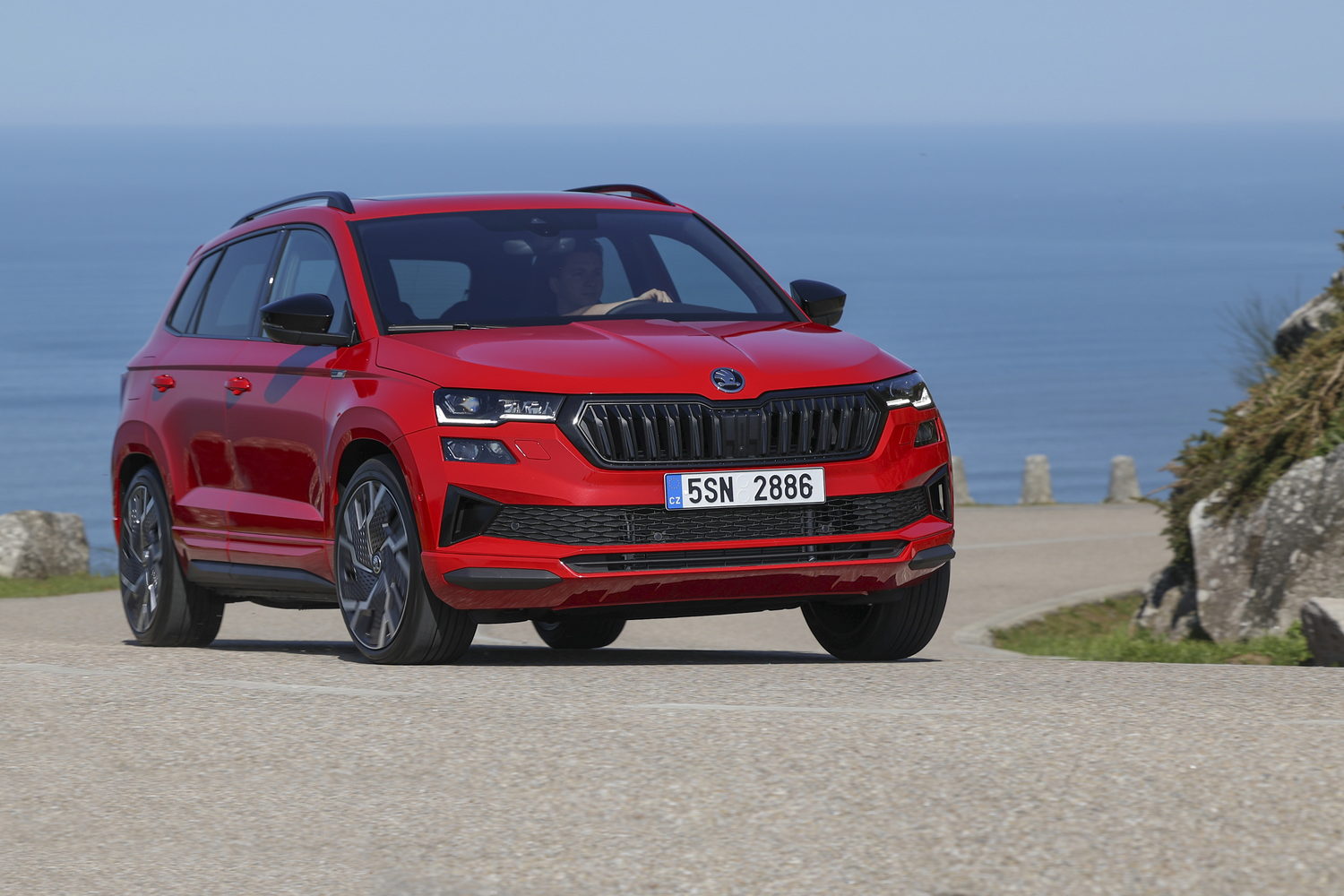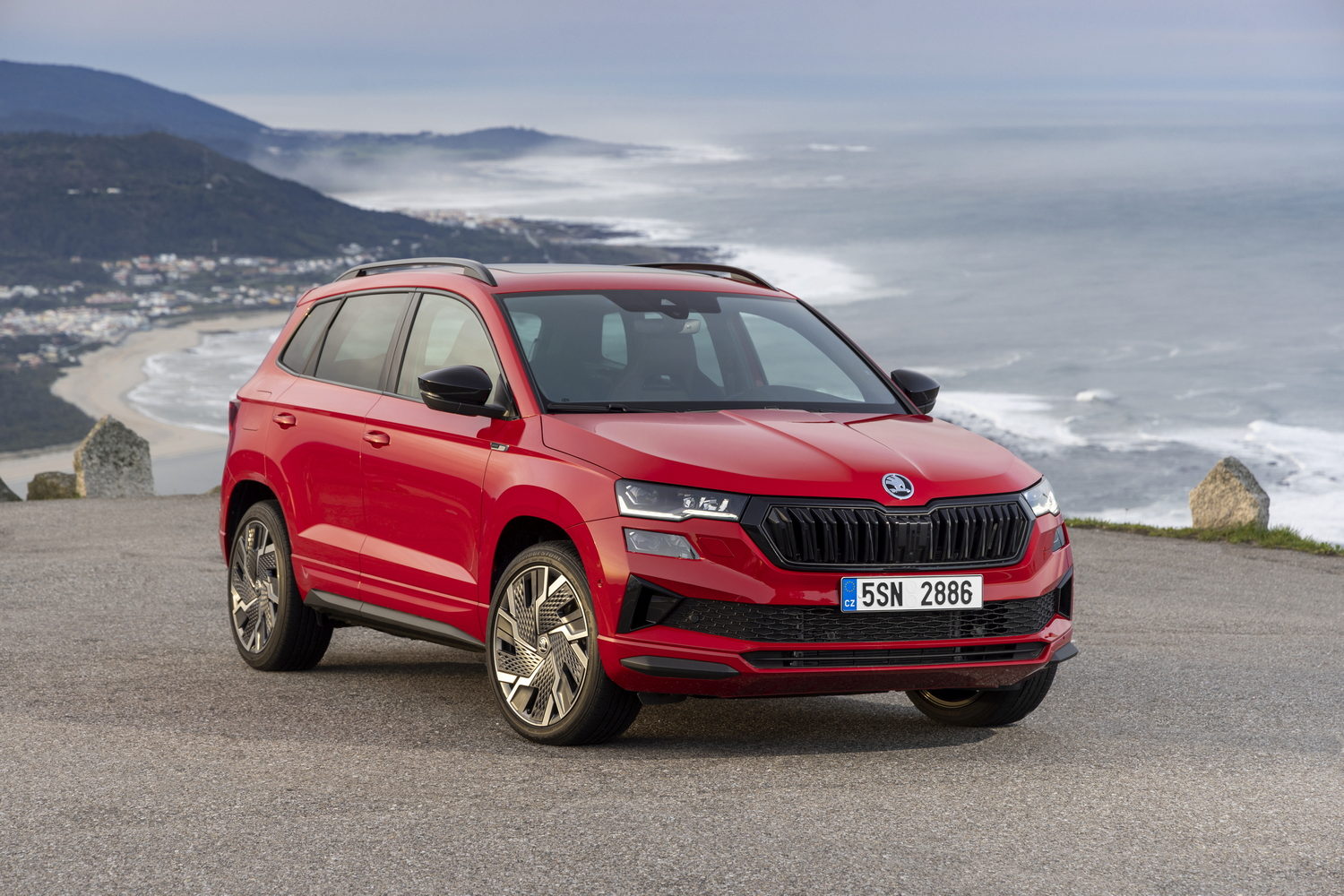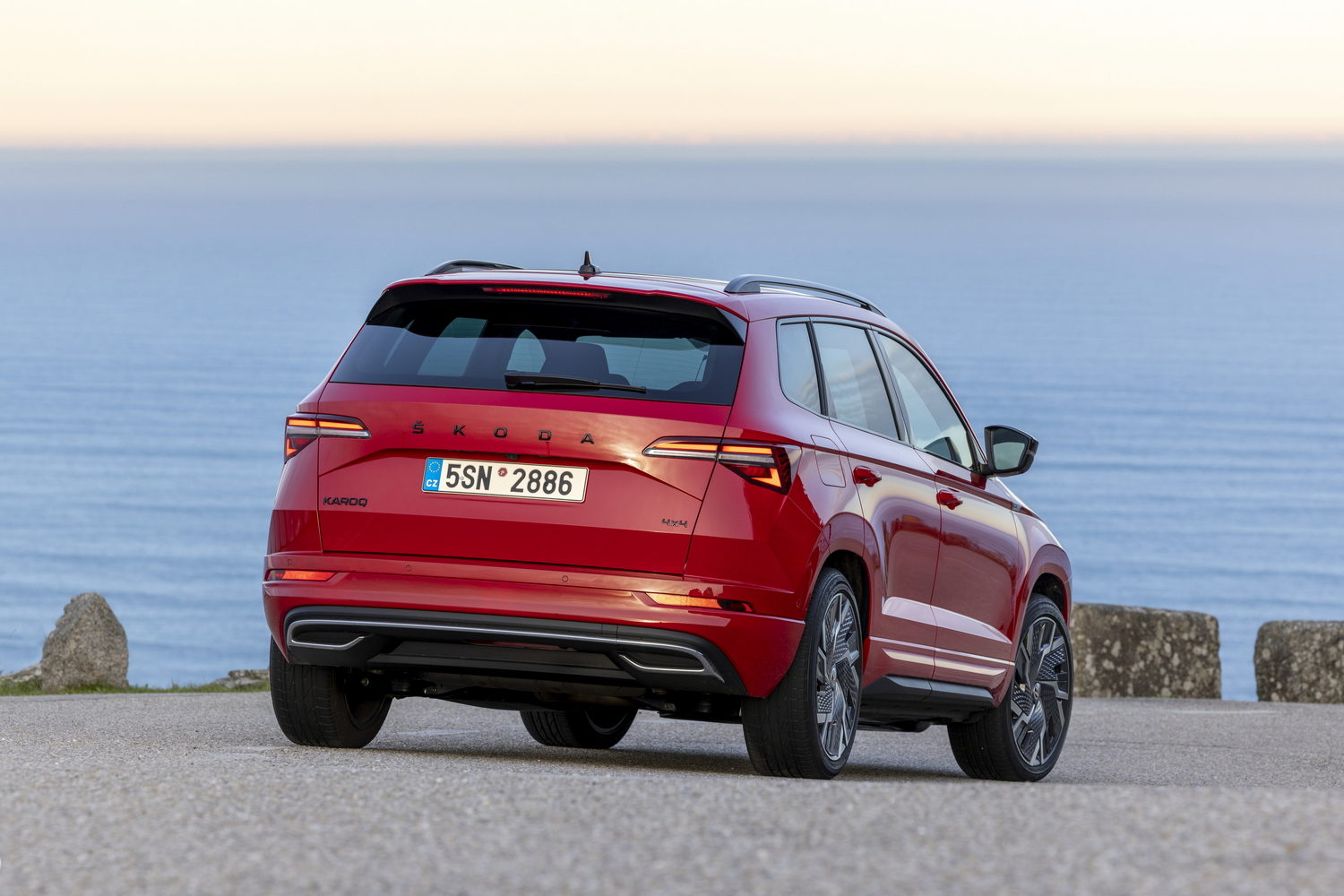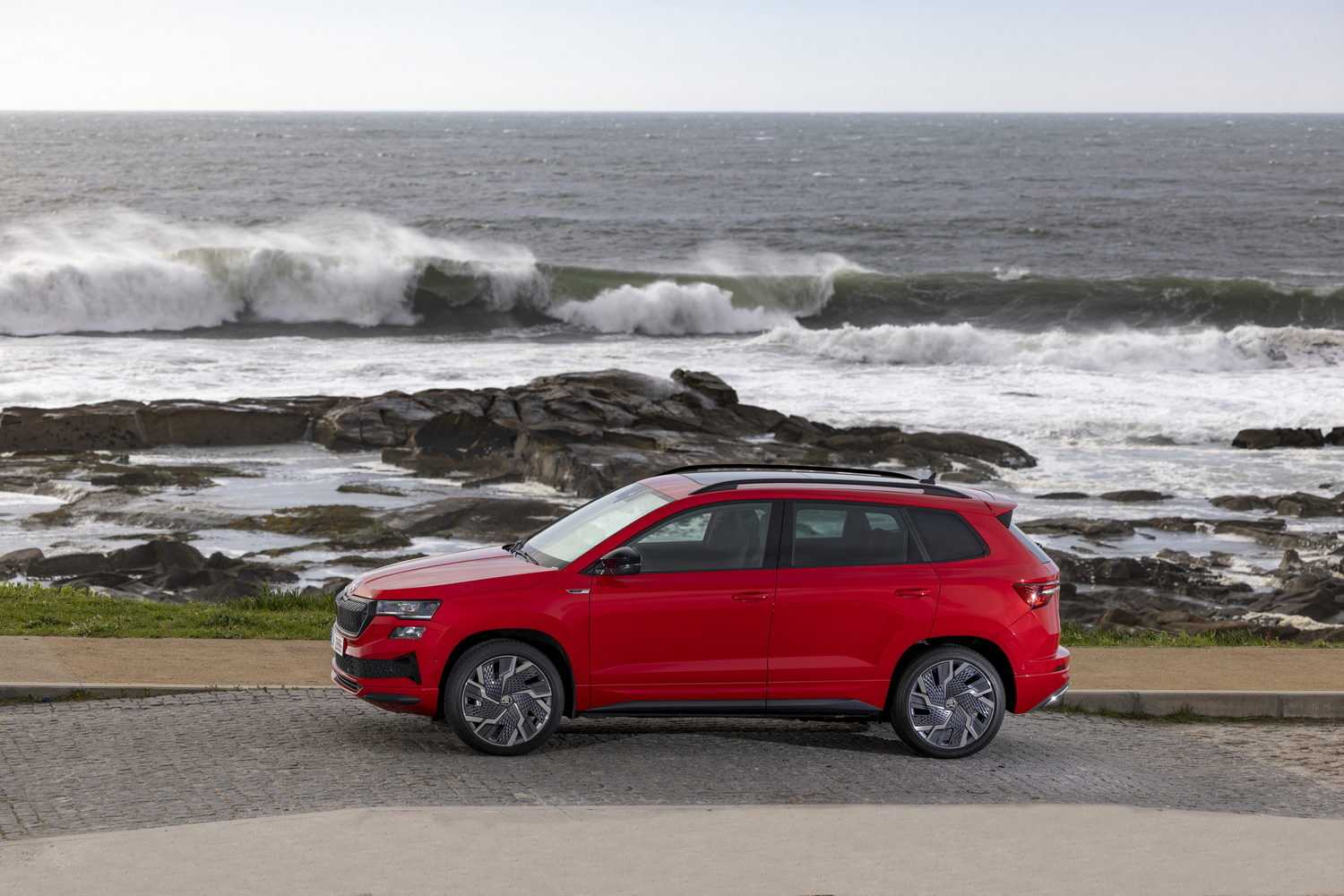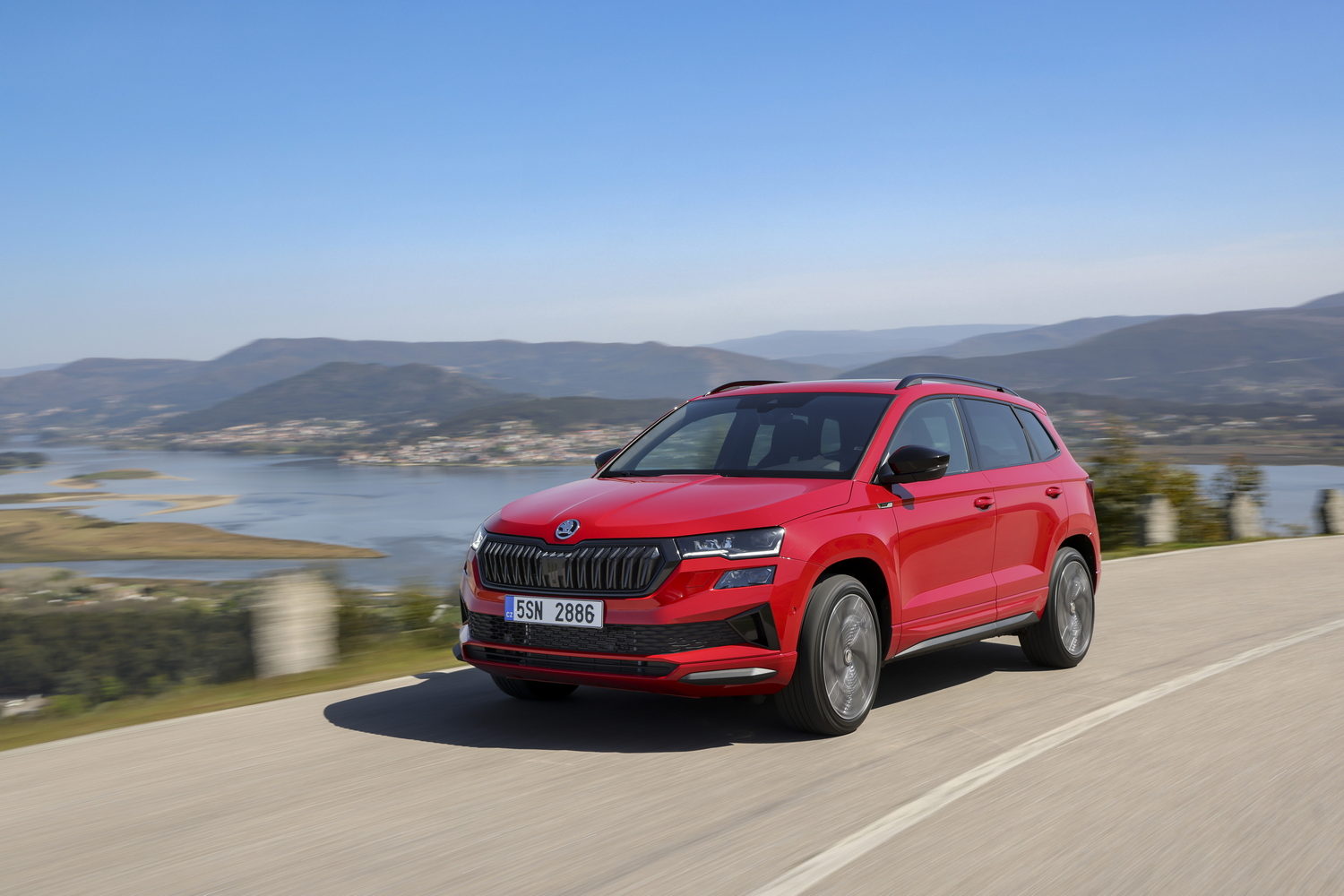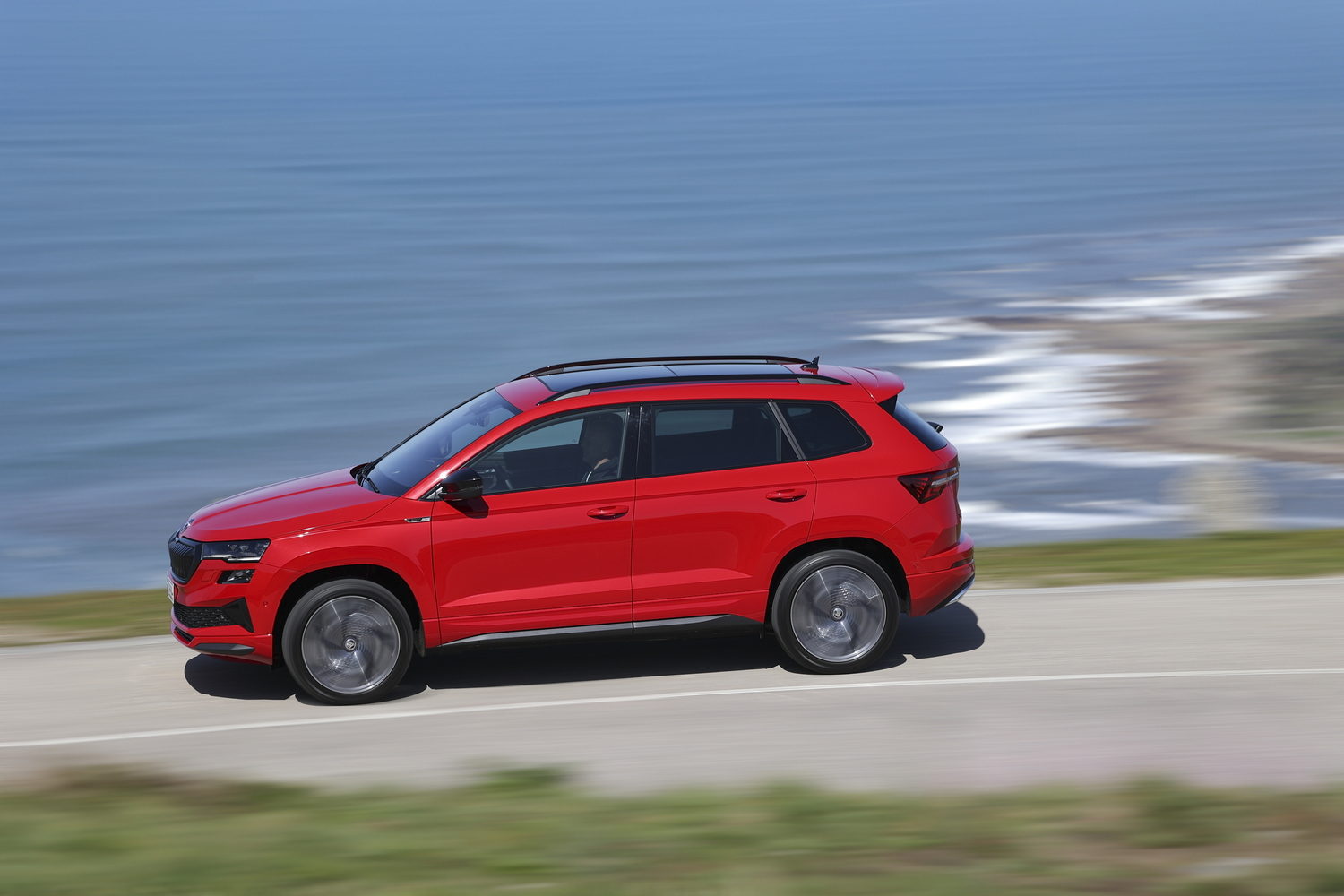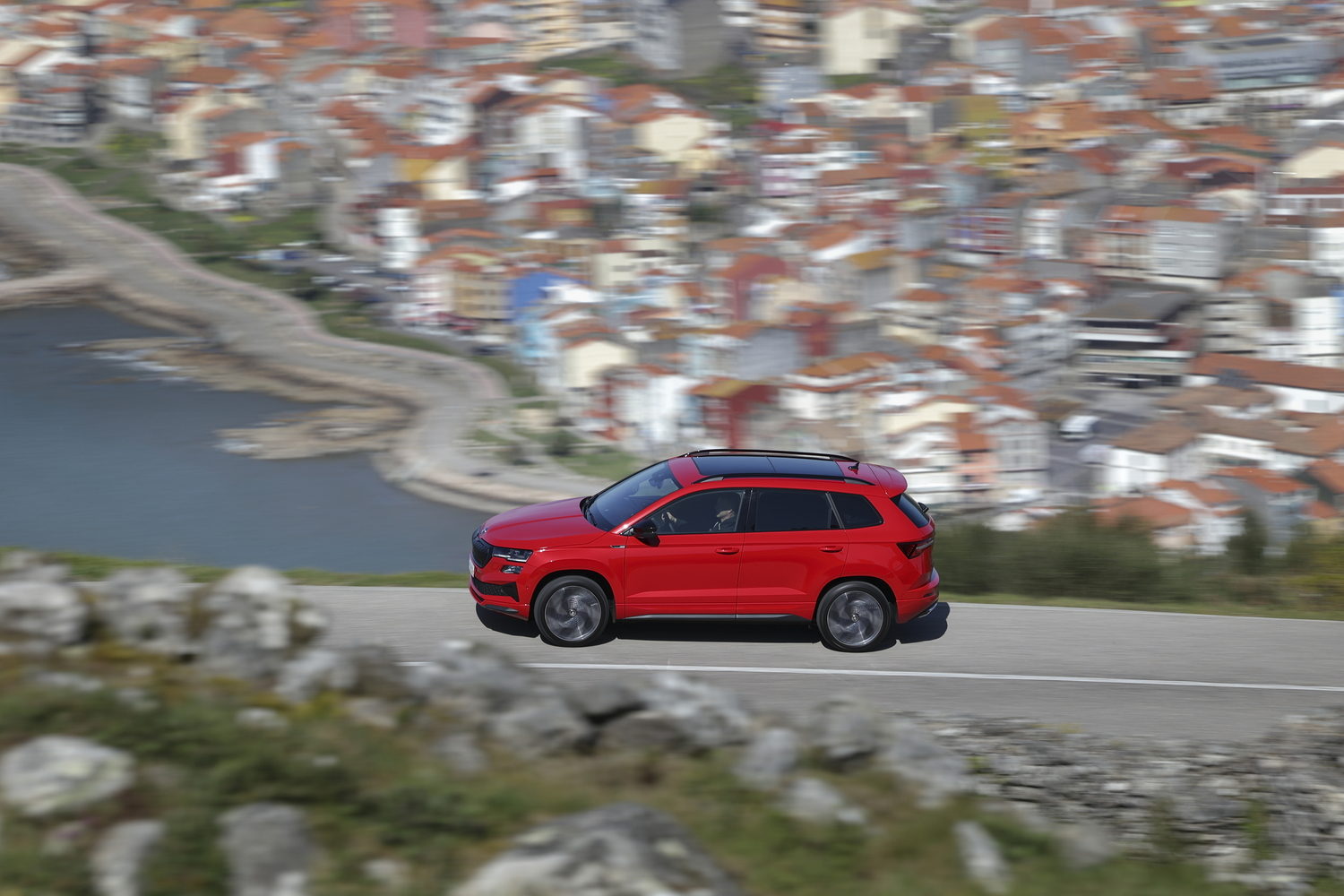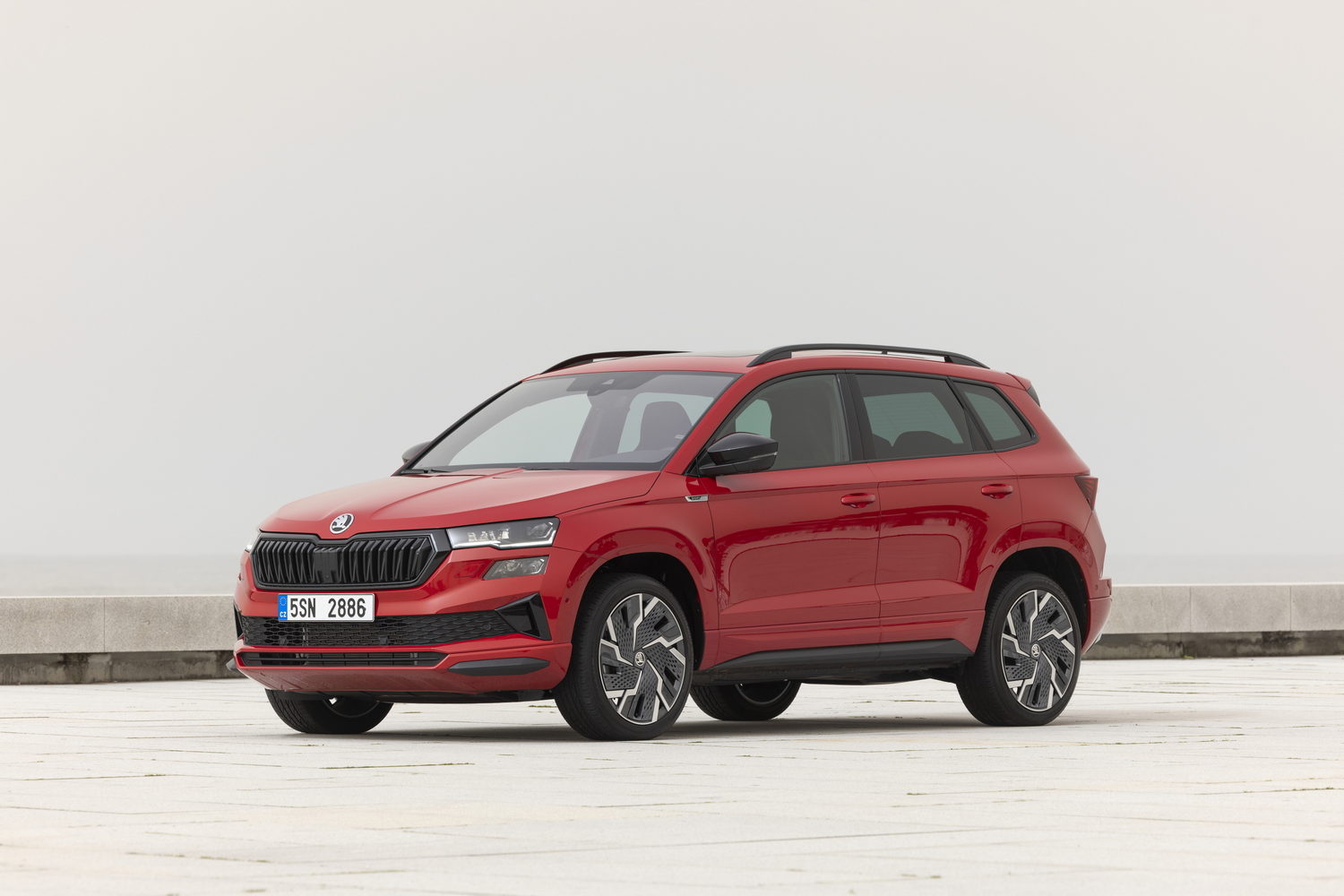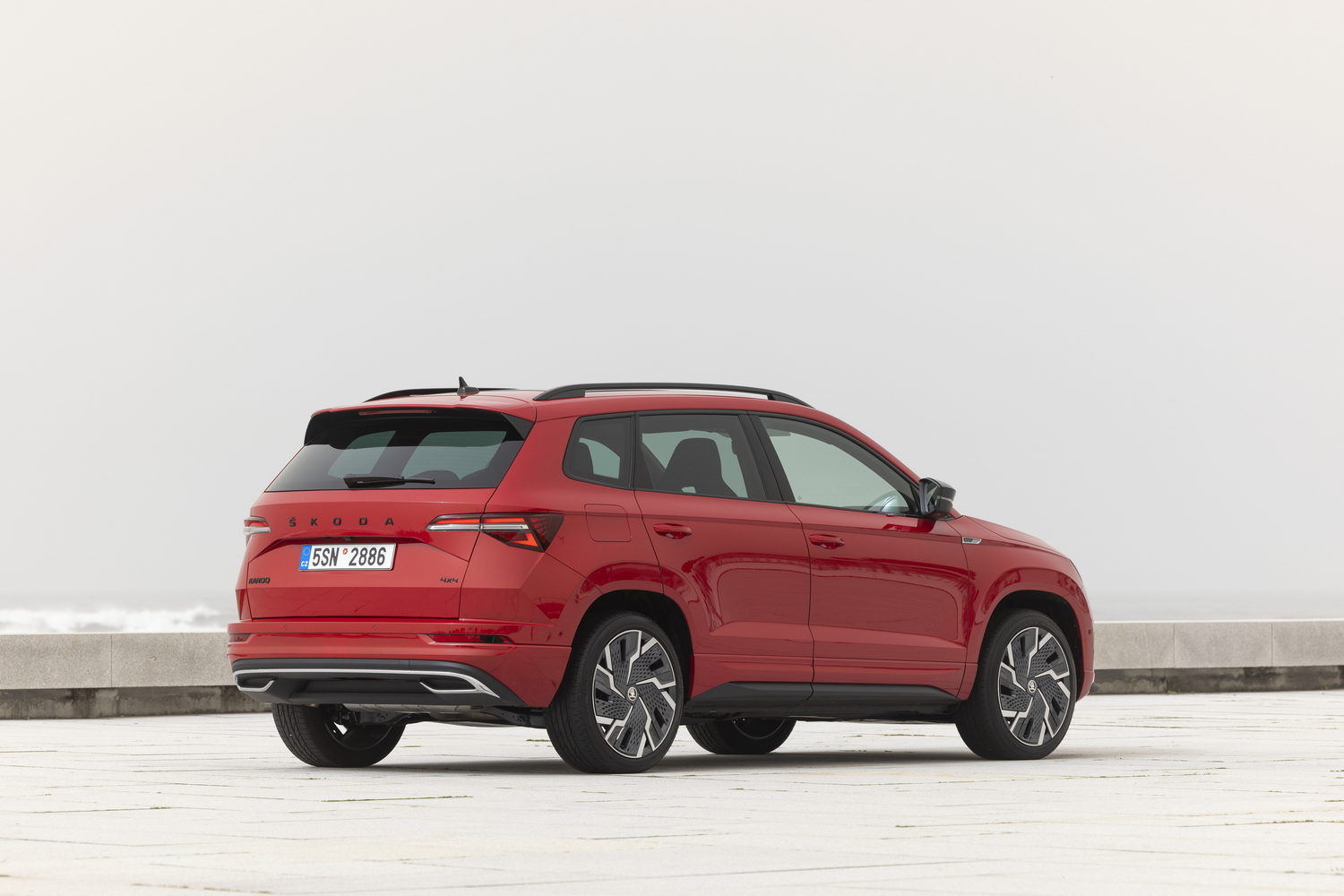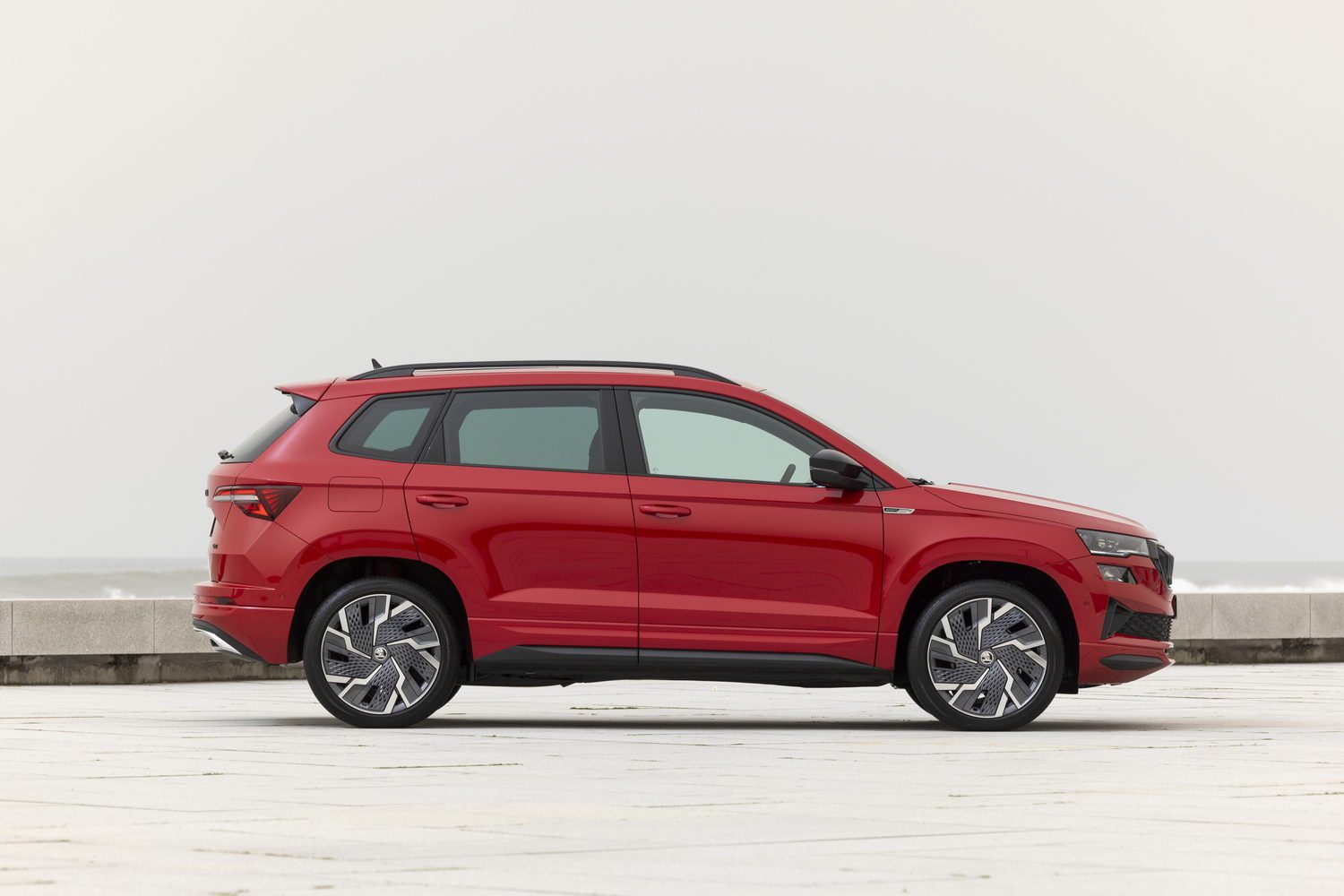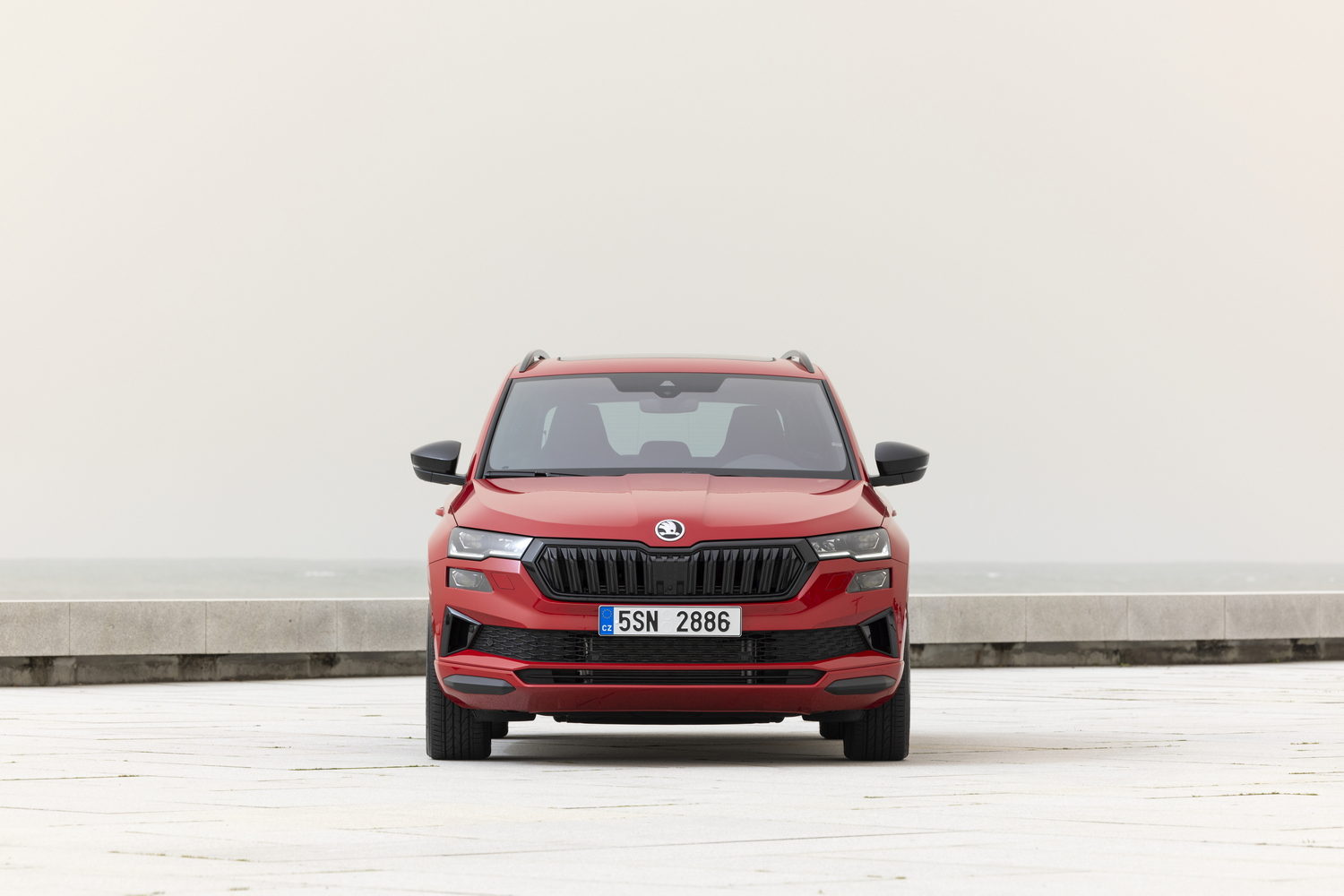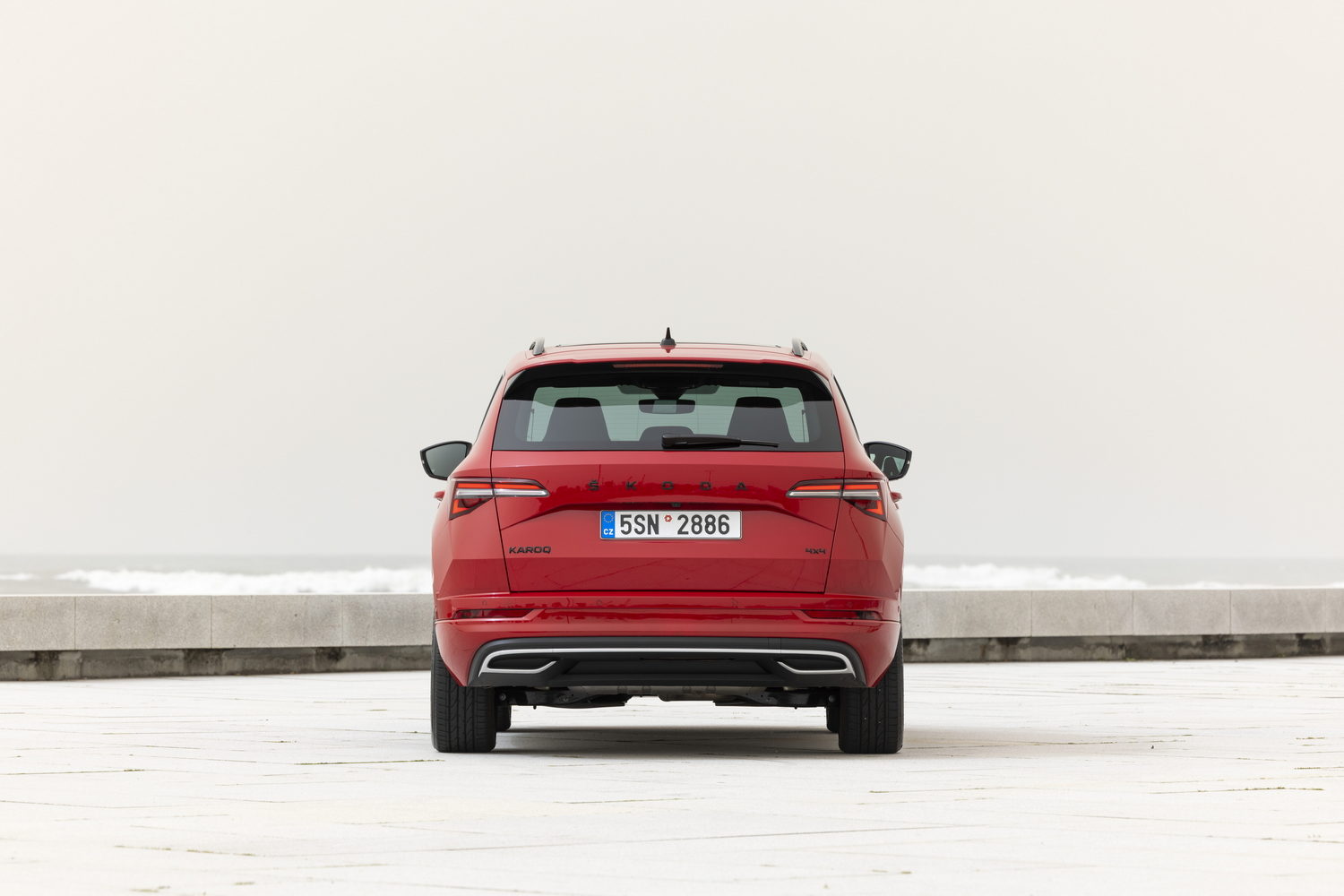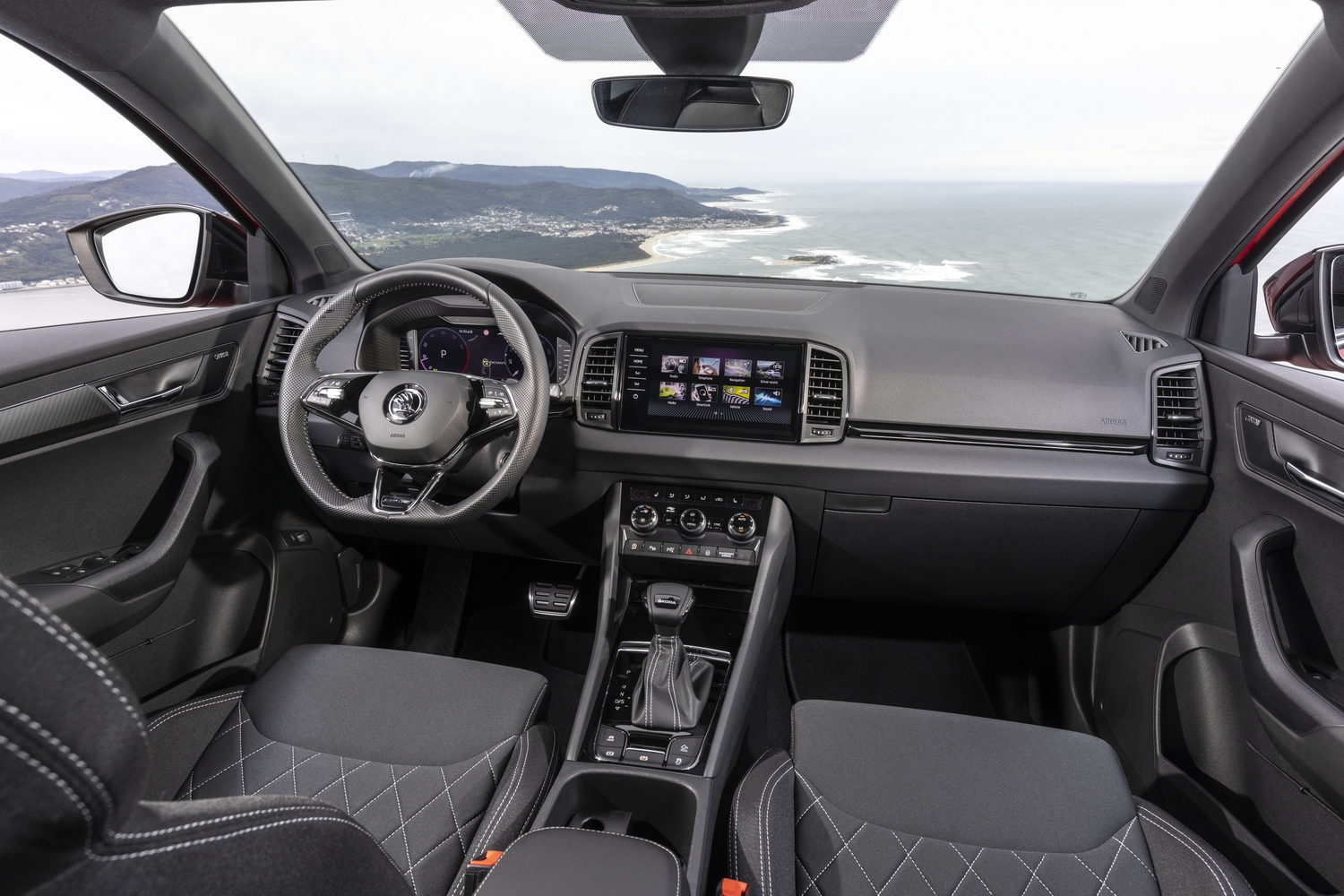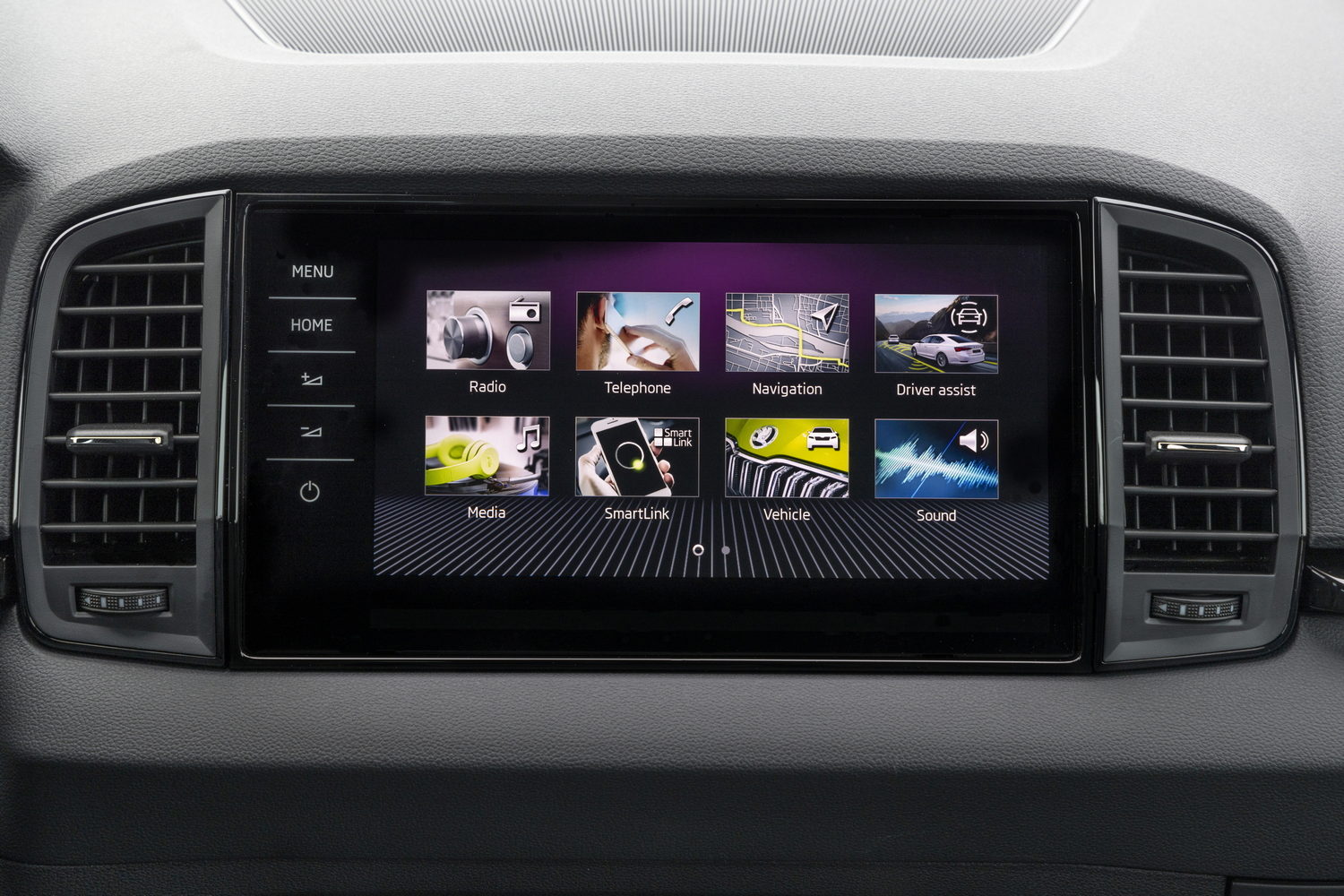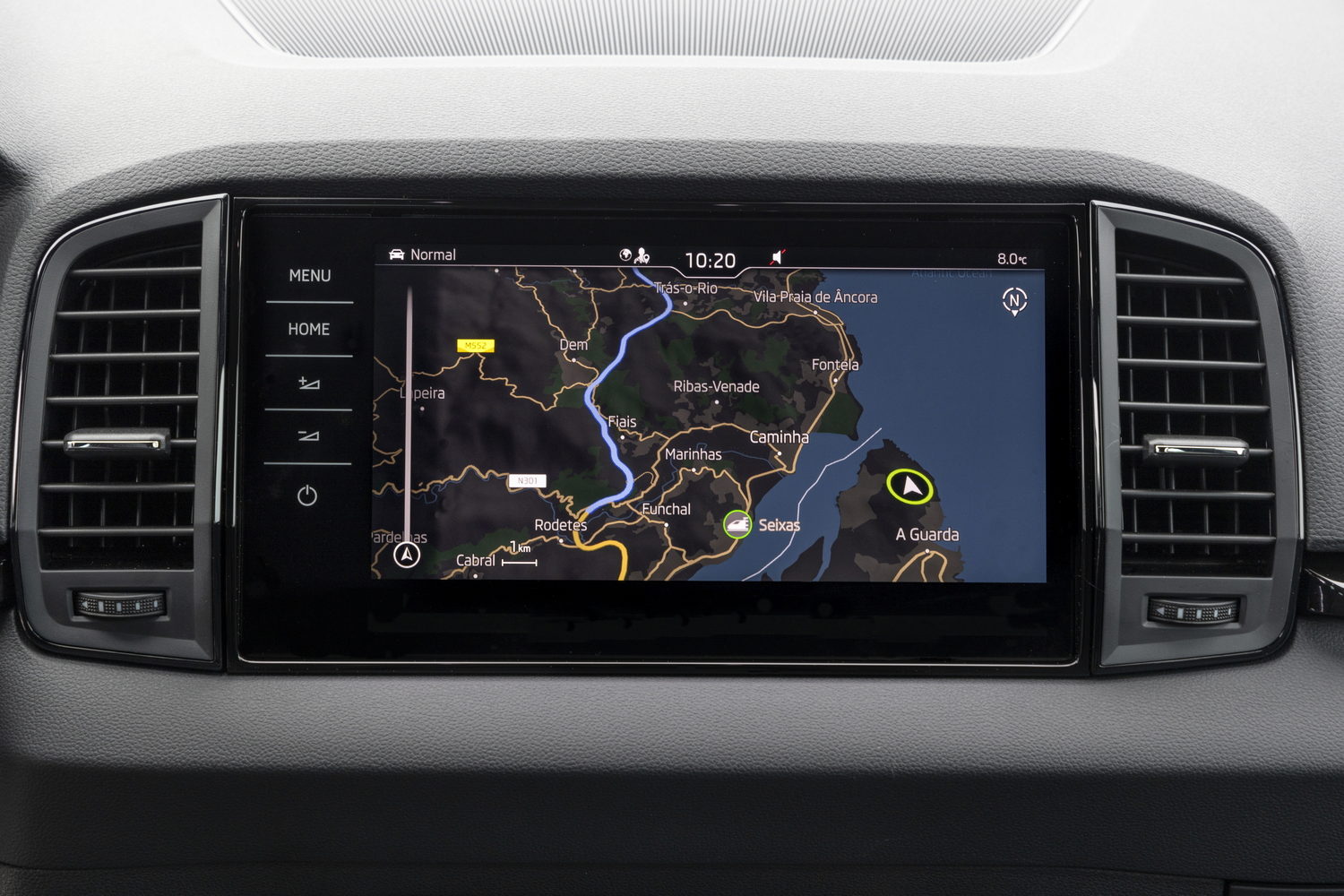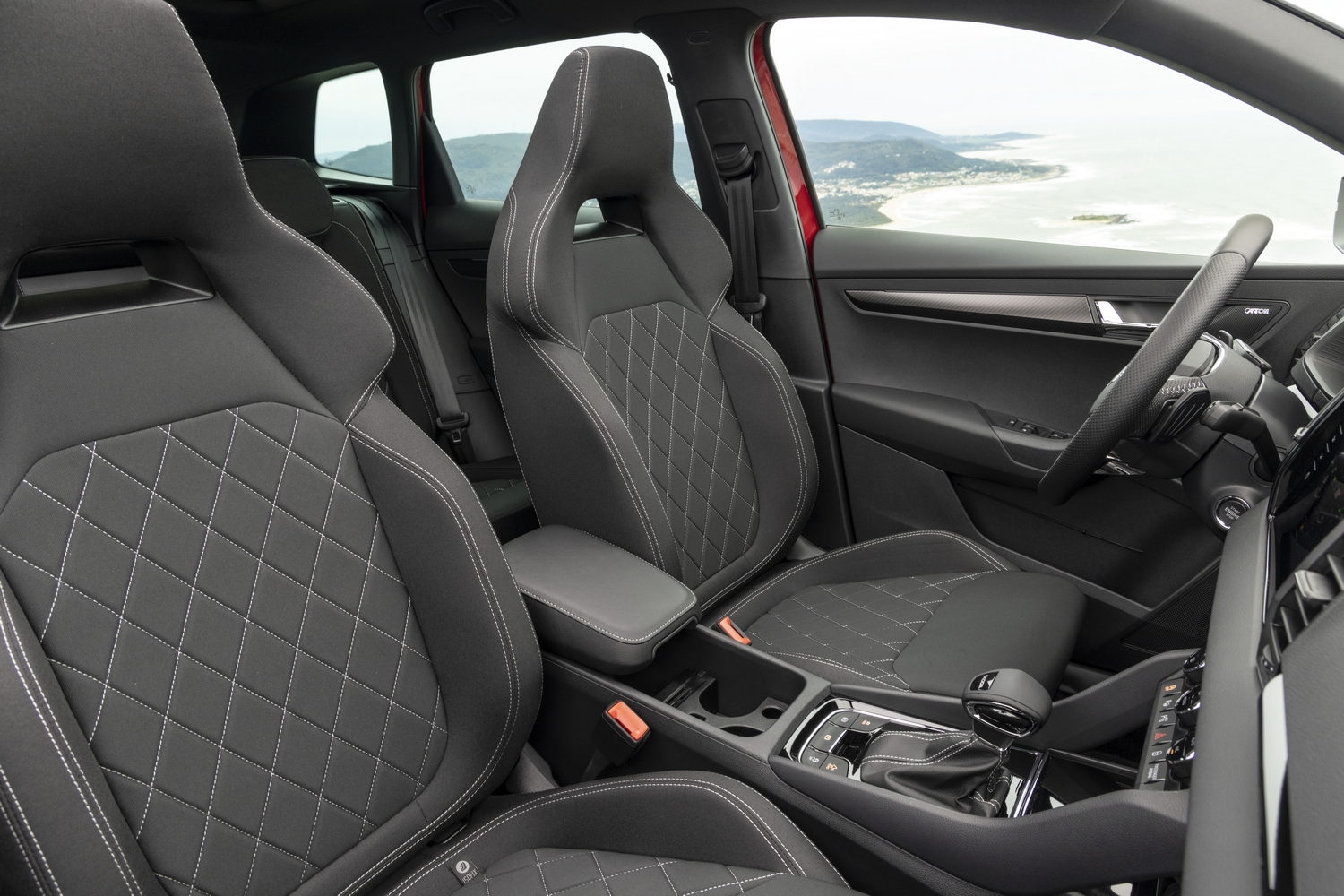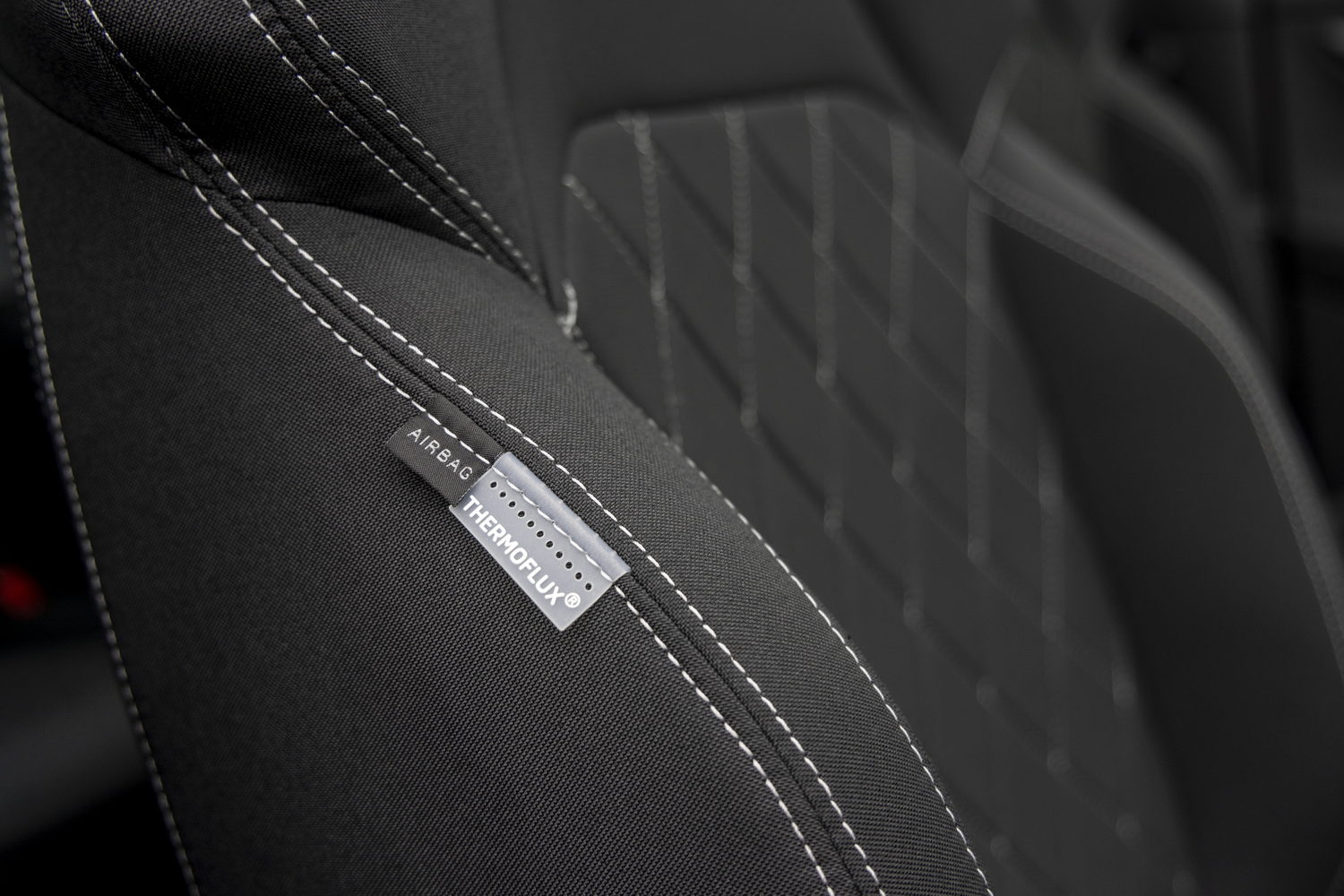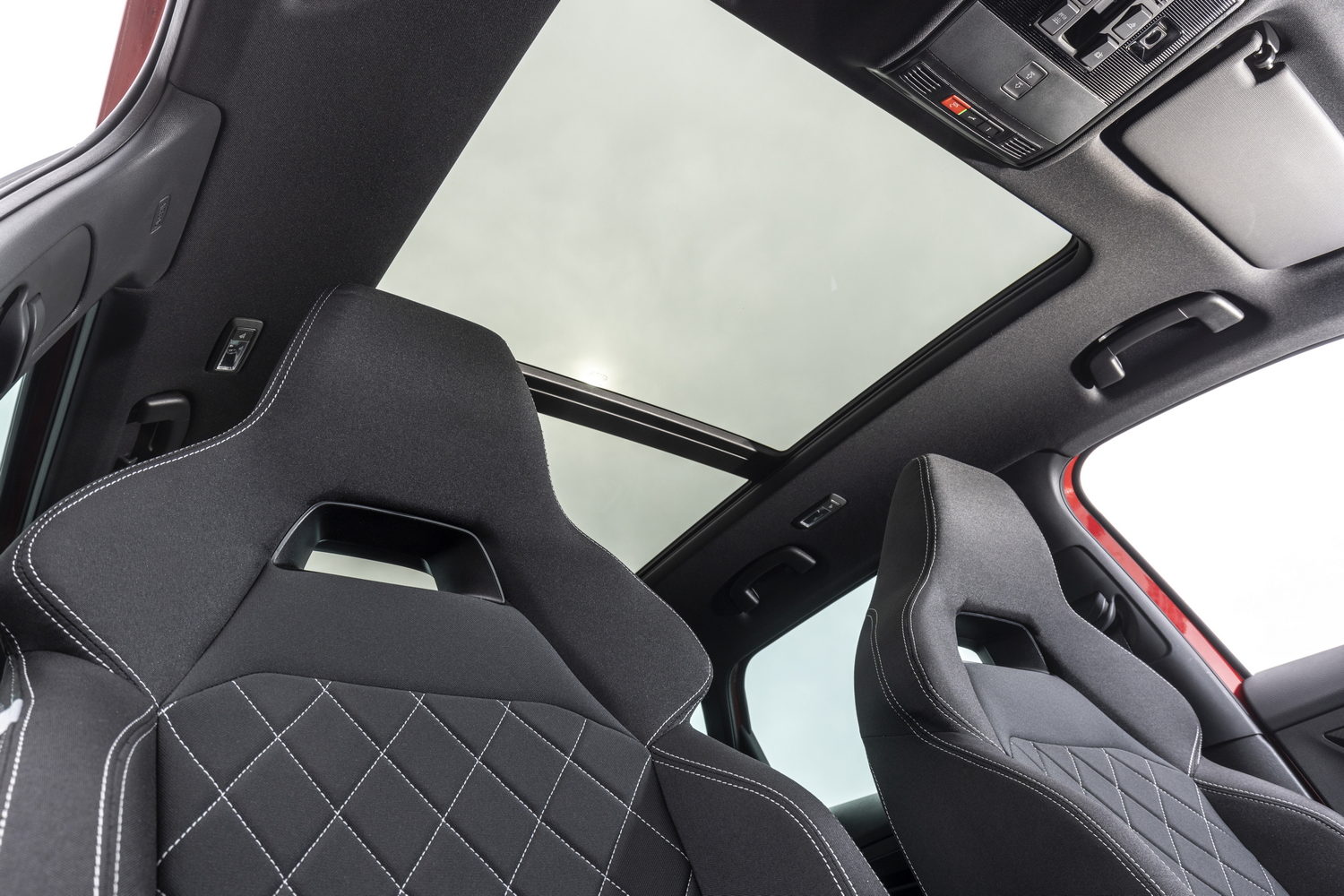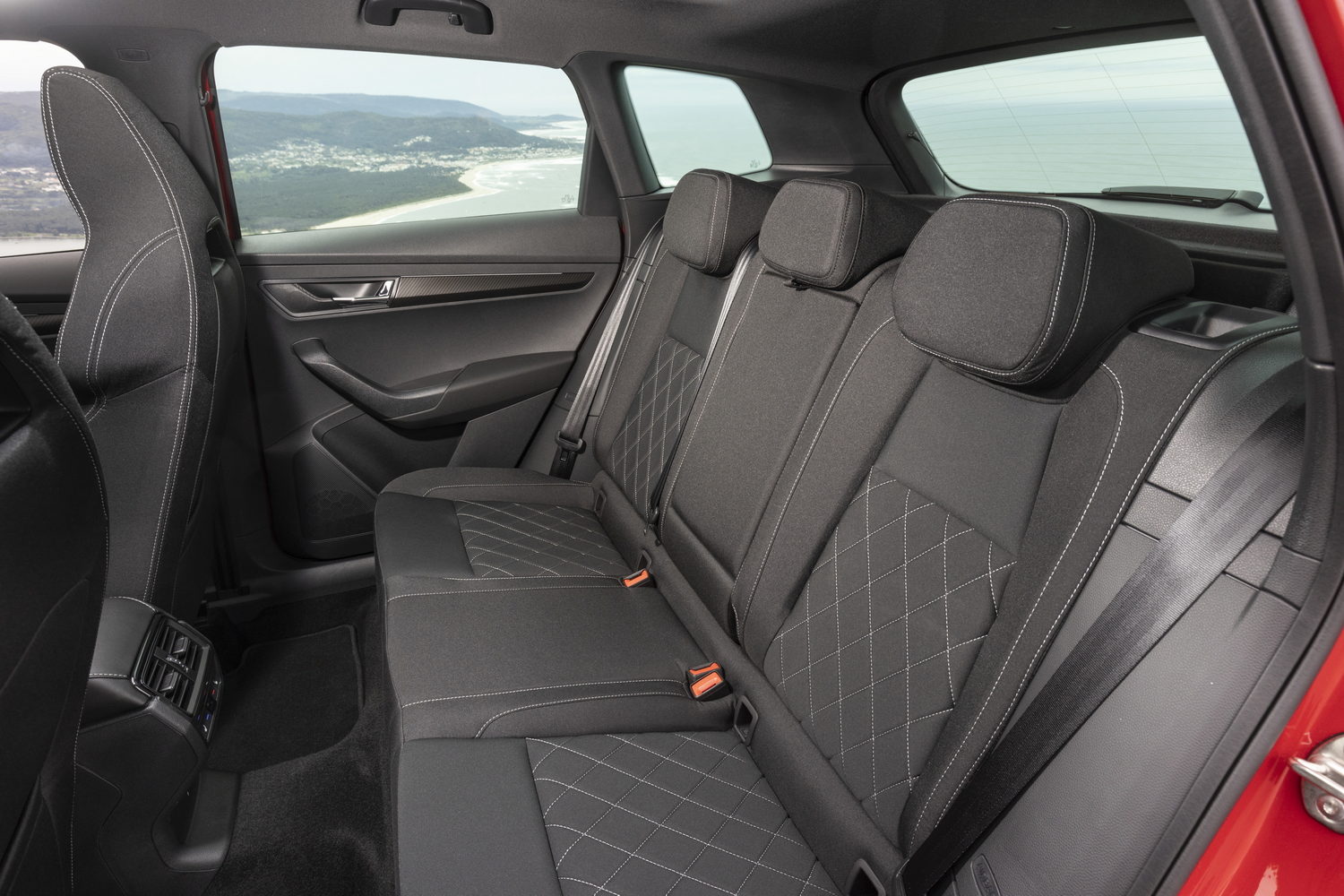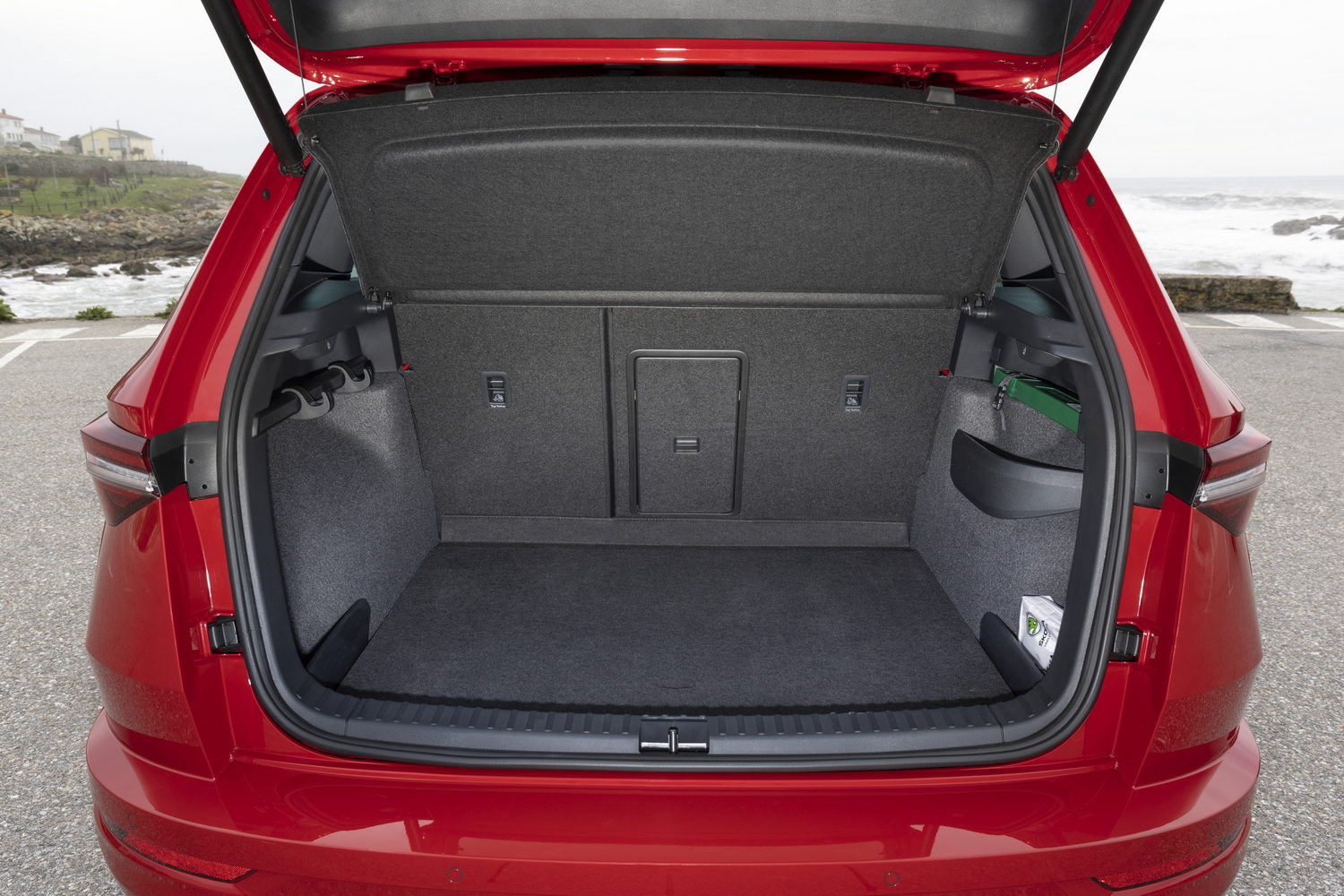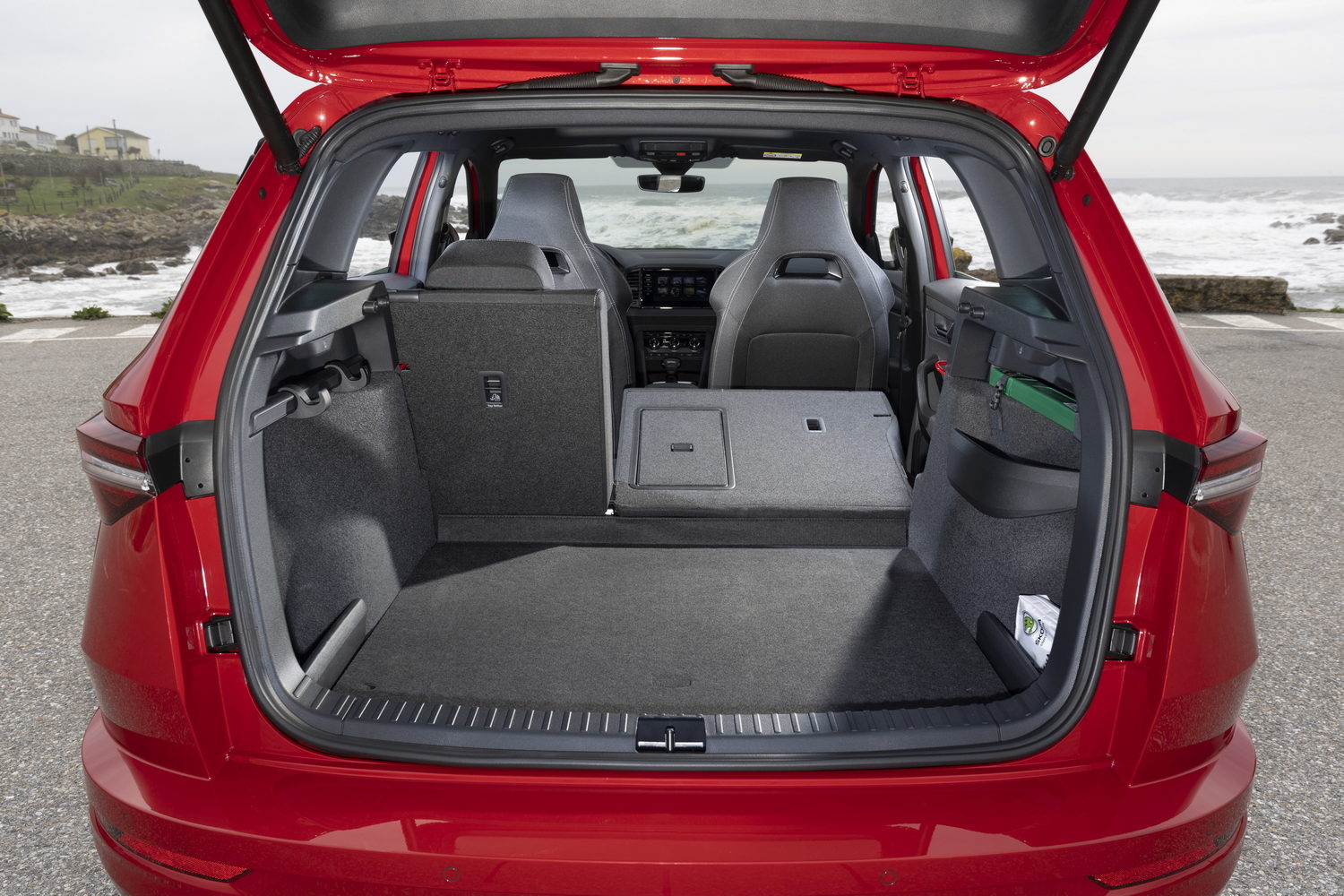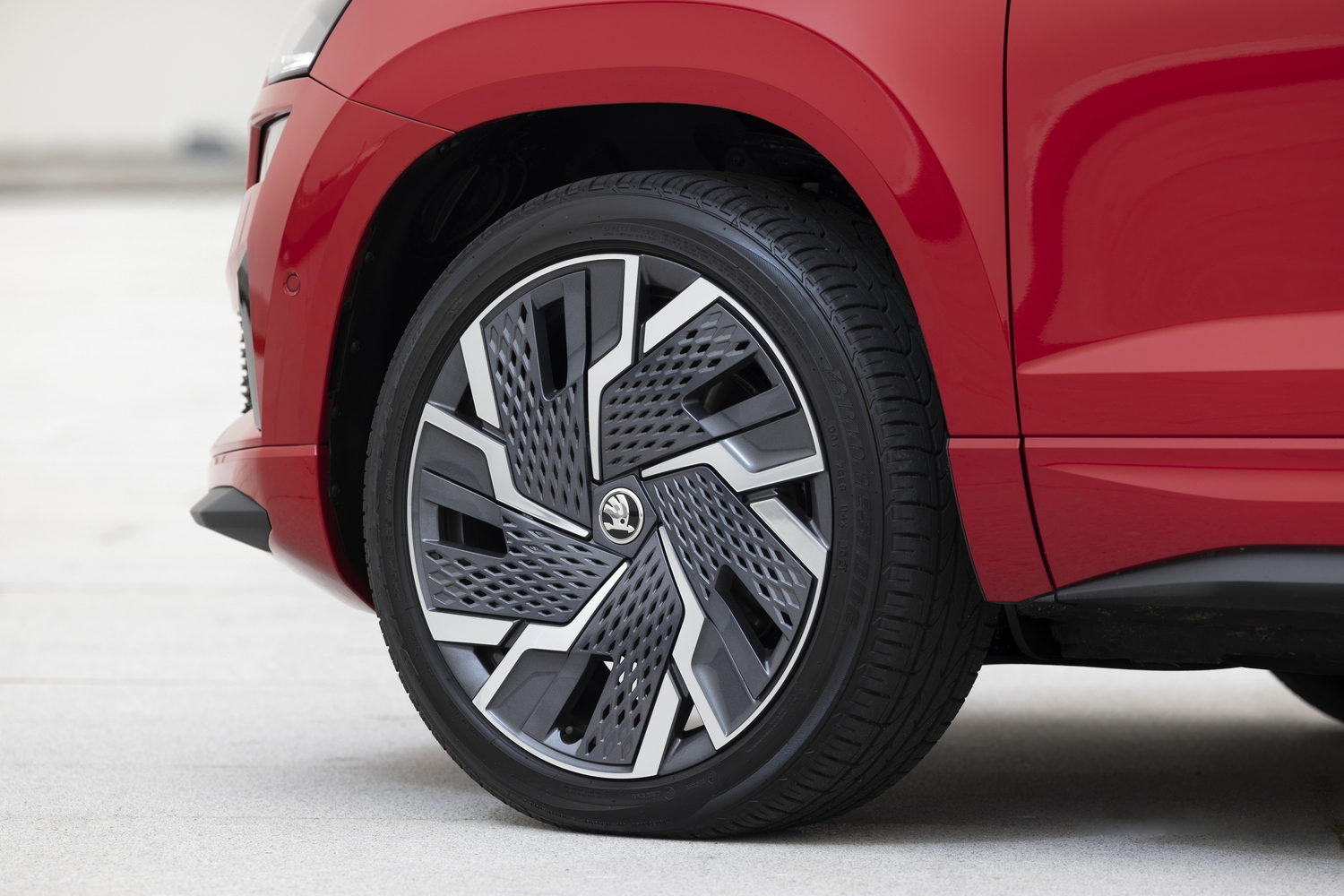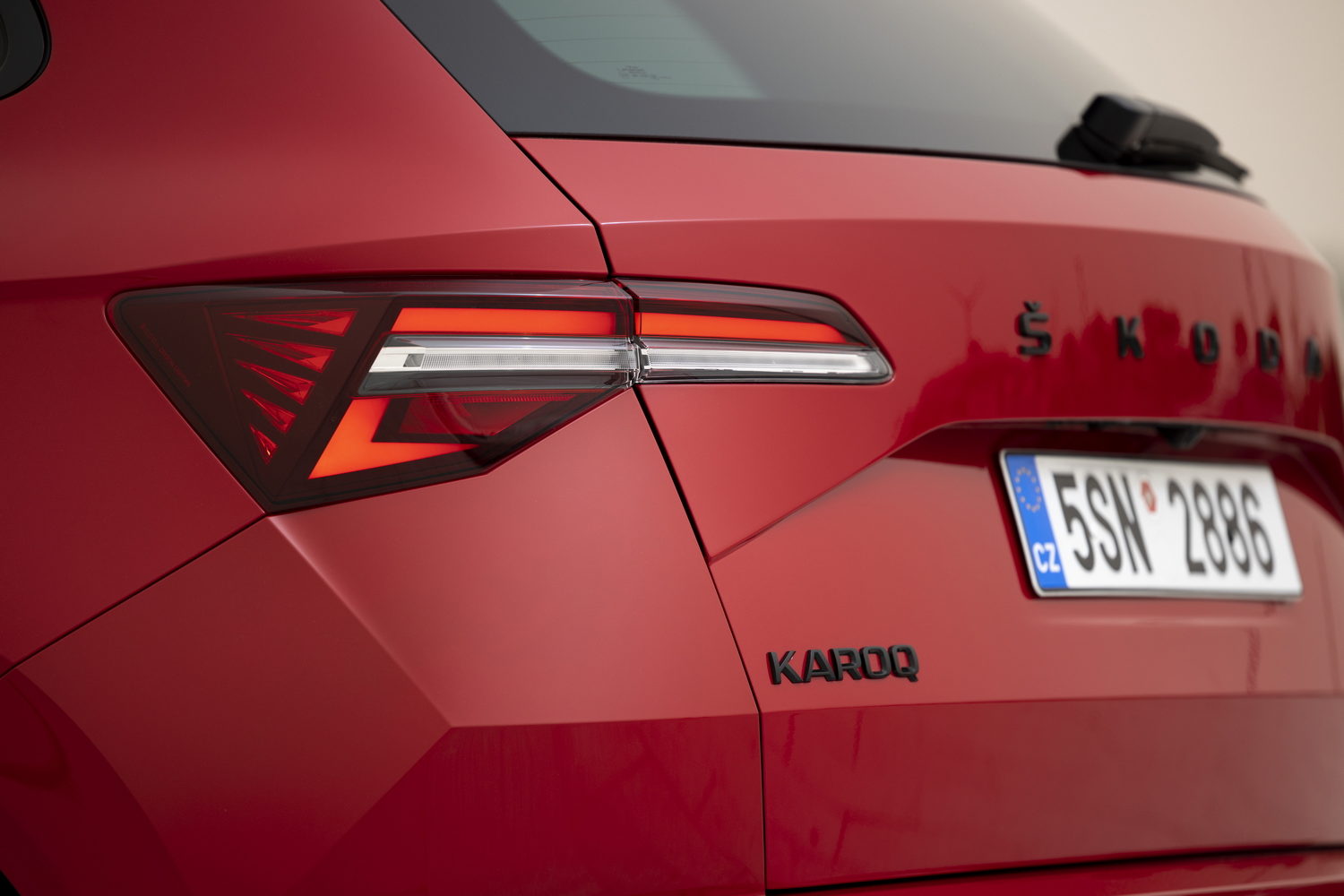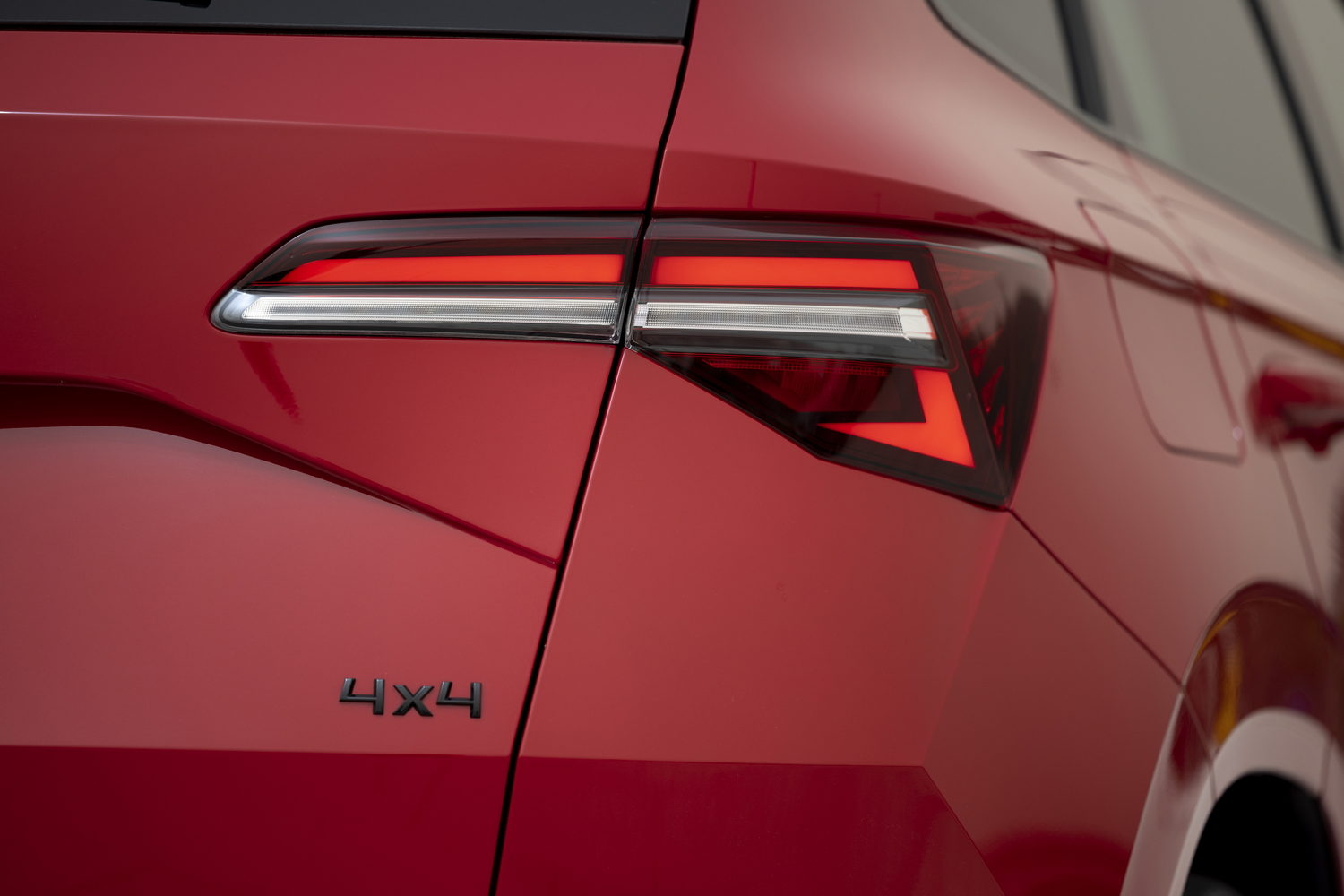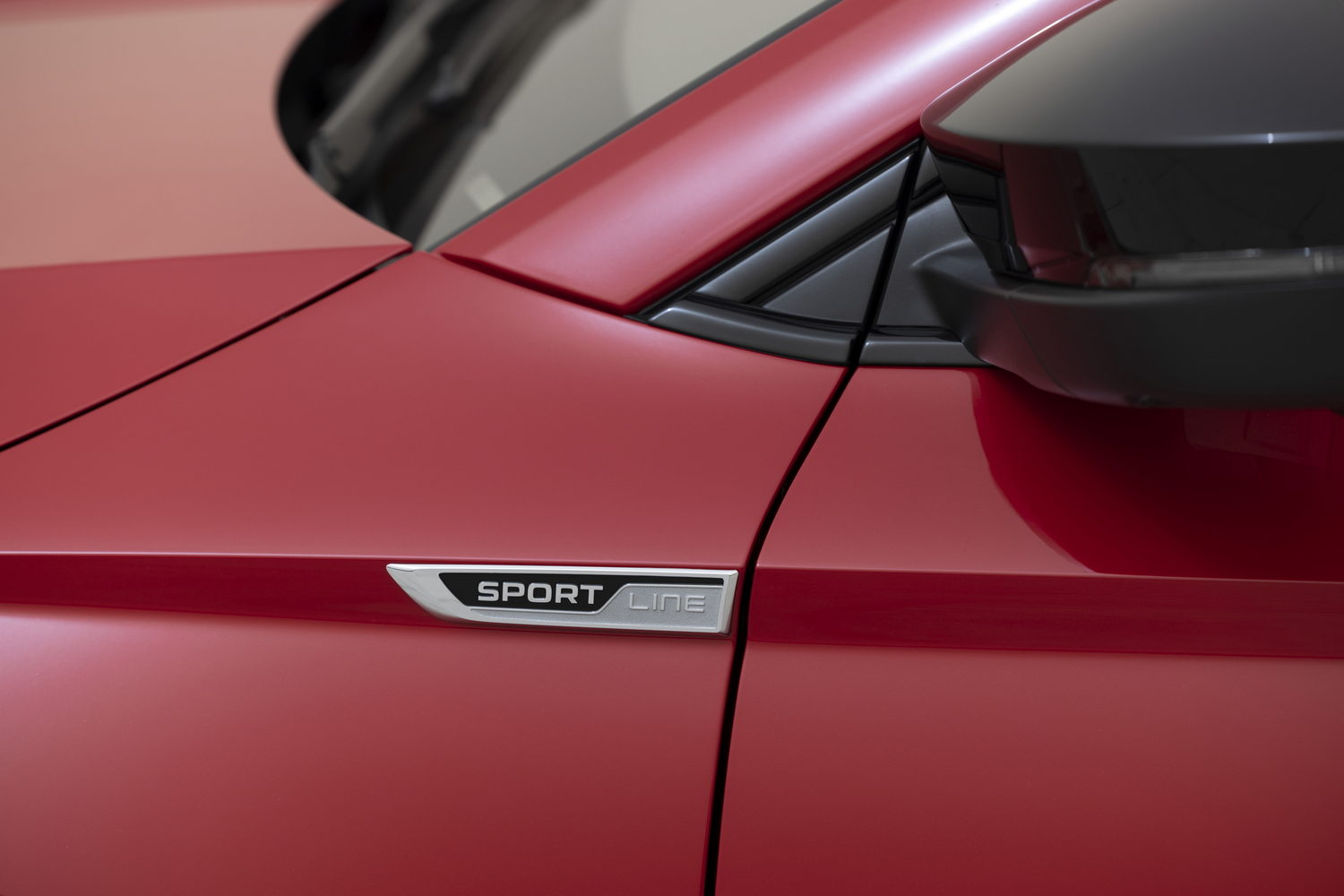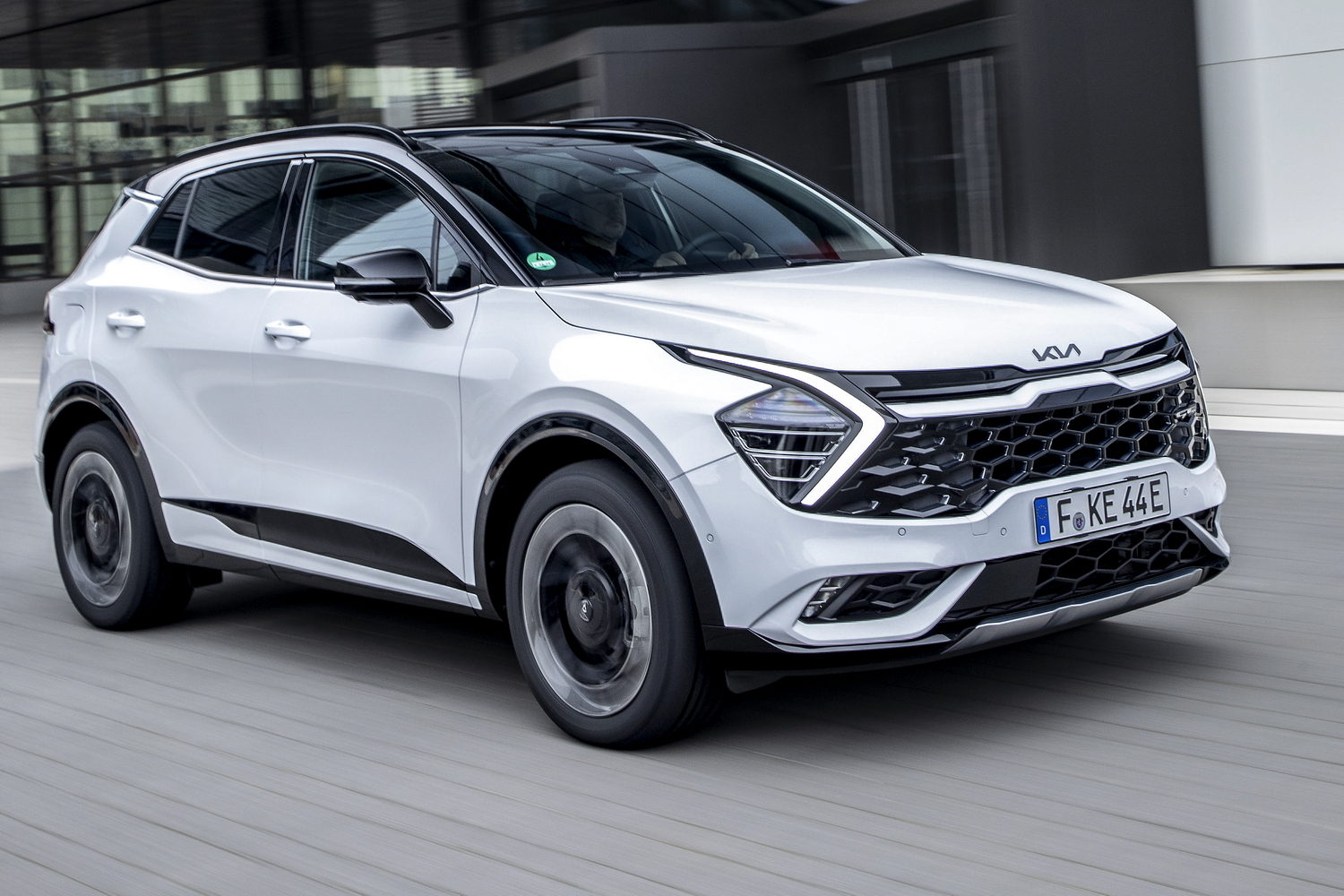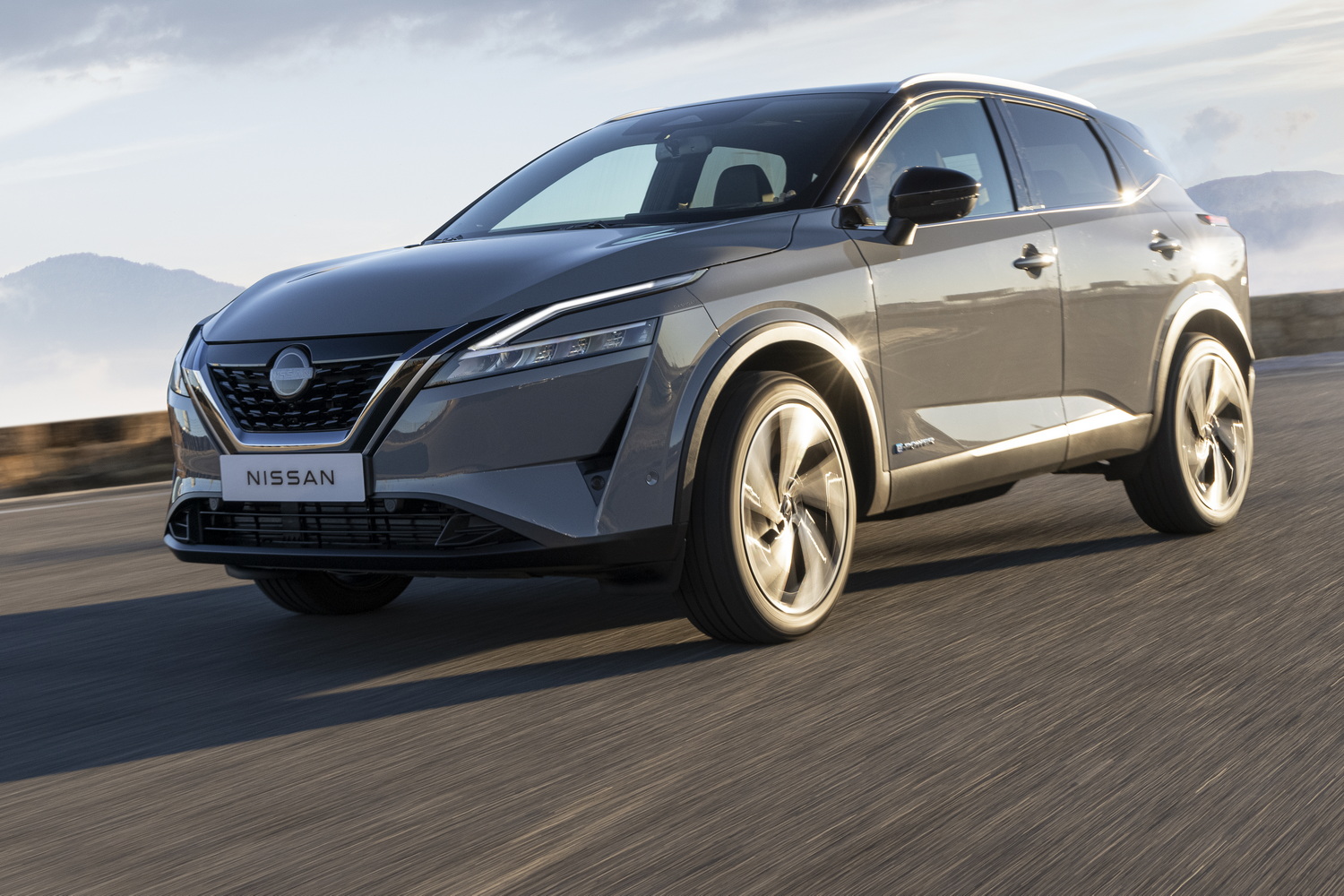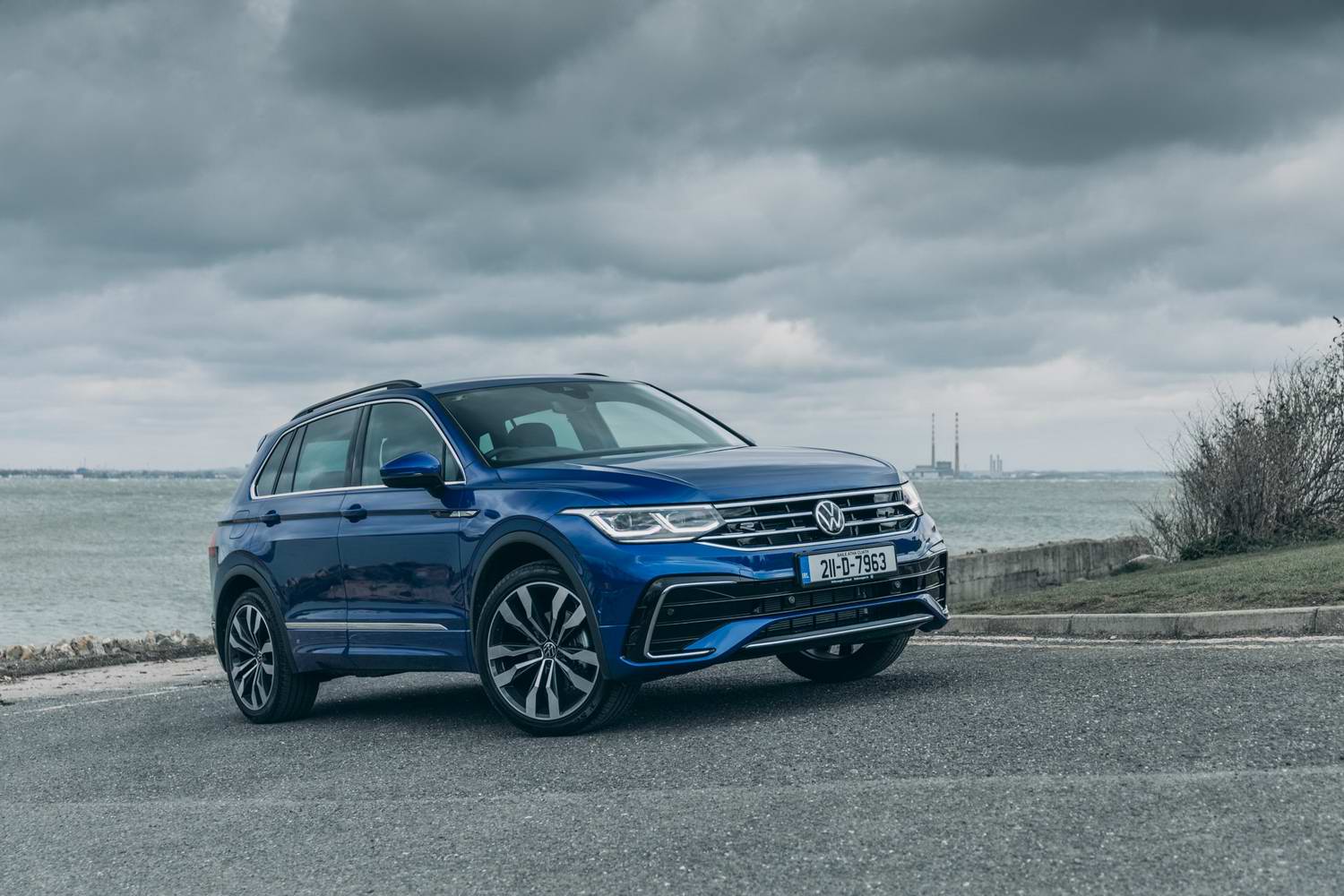The Skoda Karoq receives some minor changes for 2022 as part of a mid-life update. While it remains one of the most practical cars in the crowded crossover segment, the lack of electrification options puts it at a disadvantage against some of the newer models on the market.
In the metal
If you already own a Skoda Karoq then you needn't be too concerned by the updates making up this latest version as the exterior styling changes are quite subtle. This Sportline version reviewed here gets a body kit that helps it stand out from the regular model. Changes around the front of the Karoq bring its appearance into line with its larger sibling, the Kodiaq, through a more pronounced grille design. On this Sportline model it gains a gloss black surround that makes it look larger. That gloss black finish also surrounds the side windows and covers the door mirrors.
Skoda now equips the Karoq with LED headlights, with advanced matrix technology available as an optional extra. The headlights carry a new daytime running light signature and the two-part design remains a feature of the front. Across the lower bumper section is a mesh grille design that extends to the corners where a new air curtain helps to channel air through the bodywork and out through the wheel arch. This increasingly common feature helps to improve aerodynamics, which in turn leads to a reduction in vehicle emissions and fuel consumption.
A new selection of alloy wheels range from 17- to 19 inches in diameter, and all feature some kind of insert or cover to help make them more aerodynamic. The Sportline model gets 18-inch 'Procyon' black alloy wheels as standard and loses the plastic cladding around the wheel arches found in other Karoqs. Its front bumper features more painted areas and black inserts that jut out from each corner, too.
As with the front, there are some minor styling revisions at the back in the form of new light units that appear slimmer - and with this specification the badges are black. The roof spoiler is slightly larger now, extending further back, again in the name of helping the aerodynamics. Other changes under the skin include active cooling shutters that close when not required, enclosures for the underbody and covers around the fuel tank. All told the exterior changes add up to claimed a reduction in CO2 emissions of 15 per cent compared to the 2020 Karoq.
The overall layout remains the same inside, and in this Sportline specification there are sports seats in the front that provide added support and an enhanced look. The Virtual Cockpit digital instrument display is standard (from mid-level Style) and the Sportline version also receives a new steering wheel. It's a three-spoke design that is heated and covered in perforated leather and features the same multifunction button layout as on the Skoda Enyaq iV. A 9.2-inch touchscreen is standard, as is a wireless charging pad in the centre console. Skoda is generous with practical features, too. There are large door bins in the front and back and good room for those sitting in the rear. The boot measures 521 litres, and if you choose the optional VarioFlex seats, this increases to 588 litres.
Driving it
There are two petrol and two diesel engines available for the Skoda Karoq. It's the more powerful petrol engine that we're driving here, a 150hp 1.5-litre TSI that is paired with a seven-speed dual-clutch automatic transmission. In average day-to-day driving there isn't a great deal of performance difference between the entry-level 110hp 1.0-litre petrol option and this 150hp engine. Only when you get up to higher speeds and accelerate harder, such as when joining a motorway, does the added power make sense. Incidentally, the 1.0-litre TSI engine isn't available with the Sportline specification.
That performance is sufficient for a car of the Karoq's size, and the turbocharged four-cylinder engine is smooth and reasonably quiet for the majority of the time. It features some fuel-saving tech with a cylinder deactivation system that cuts combustion in two of its four cylinders when the car is cruising at a steady speed. Only for the small 'Eco' symbol appearing on the digital instrument display when the cylinders are switched off, you'd never know it was occurring.
The automatic DSG transmission is well-suited to this petrol engine with smooth gear changes. We did also sample a Karoq with the manual gearbox and found little fault with it. A light clutch makes light work of driving in traffic and sixth gear is long enough to keep the engine settled on the motorway, while the cabin also remains well insulated from road and wind noises.
The suspension is nicely balanced and provides a good amount of comfort for soaking up bumps. It is also firm enough to ensure a suitable amount of body control when it comes to the bends, and the Karoq generally feels agile and reasonably light on its wheels given its size.
What you get for your money
As the Skoda Karoq Sportline sits at the top of the model offering it is more costly, but does come with a lot of standard equipment. That said, there is a €10,795 price gulf between the Ambition model and Sportline version with the same 1.5-litre petrol engine. If you choose to have the DSG automatic that gap reduces to €7,495 between the same specification grades. The 2.0-litre diesel engine is the most affordable Sportline version at €41,225.
Aside from the exterior Sportline body kit the interior has model-specific heated sports seats, a heated leather steering wheel, aluminium pedals and black inserts. The LED matrix headlights are standard and there is ambient lighting inside too. Keyless entry with engine start function is joined by front and rear parking sensors, a reversing camera and adaptive cruise control. On the tech side of things there's a 9.2-inch touchscreen, 10.25-inch digital instrument display and a wireless charging pad for mobile devices.
Summary
The Skoda Karoq is one of the more sensible and practical mid-size SUVs on the market. Although this Sportline model is the costliest of Karoq options, there are better-value options in the line-up, and, so long as you're not looking for a hybrid, there's an engine to suit the needs of most buyers.

